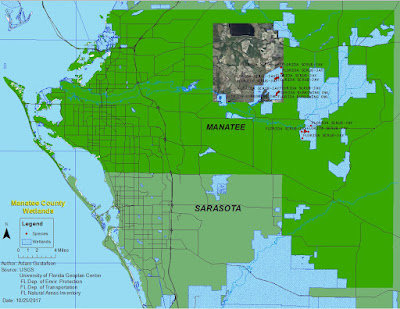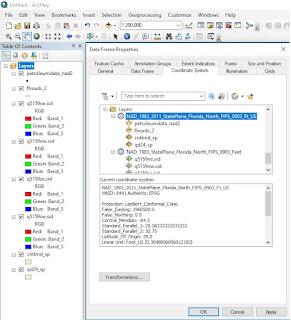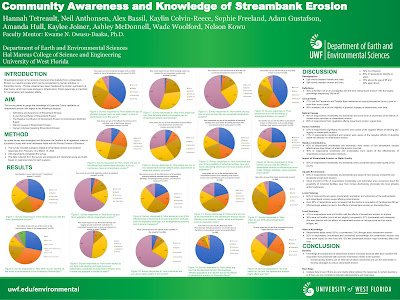"Success is the result of perfection, hard work, learning from failure, loyalty, and persistence." -Colin Powell
Over the last two weeks we were assigned a Florida county and tasked with creating a set of maps that would display the following data: roads, rivers, county boundaries, city names, public lands, digital elevation model image, digital orthophoto quarter quadrangle image, and two environmental categories. The county that I was assigned was Manatee County. I chose wetlands and invasive species for the two environmental shapefiles.After compiling all of the data from multiple databases including: Labins.org, FGDL.org, and nationalmap.gov, I came to the conclusion that three maps would be the best for displaying all of this data.
My first map consists of wetlands locations and species that occupy these areas. I constructed this map from a single data frame and transformed all shapefiles to the single projection of
NAD_1983_2011_StatePlane_Florida_West_FIPS_0902_Ft_US. On this map I included shapefiles for rivers, roads, county boundaries, wetlands,and species. A DOQQ consisting of 4 quadrants (2919) was also added to this map in order to show some terrain features of one of the larger wetlands areas.
My second map consists of state park locations within the boundaries of Manatee County. This map was constructed with two data frames so a shapefile of the state of florida could be displayed with the location of Manatee County highlighted to show location. All shapefiles on the stateparks map were transformed in order to maintain a single projection. City names and state parks were labeled and displayed via a legend in order to display information effectively.
My third map consists of a digital elevation model clipped to the boundaries of Manatee County.
This final step in the project proved to be the most challenging. In order to obtain a proper clip I had to export a shapefile of Manatee County separating it from the County Boundary file of the entirety of Florida. Once this was achieved I was able to use the Clip (data managment) tool to clip the raster file to conform to the shape of Manatee County perfectly. A suitable elevation gradient color was chosen to reflect low areas as greenish shades and higher areas as reddish shades.
Overall this project was dense but as is to be expected for a two week midterm. I am pleased with the outcome.
Success is the result of perfection, hard work, learning from failure, loyalty, and persistence.
Colin Powell
Read more at: https://www.brainyquote.com/quotes/keywords/persistence.html
Read more at: https://www.brainyquote.com/quotes/keywords/persistence.html
Success is the result of perfection, hard work, learning from failure, loyalty, and persistence.
Colin Powell
Read more at: https://www.brainyquote.com/quotes/keywords/persistence.html
Read more at: https://www.brainyquote.com/quotes/keywords/persistence.html









